 Carter Horsley
Carter HorsleyMar 07, 2017
Carter's Review
This attractive, 19-story building at 531 Main Street on Roosevelt Island was erected in 1975 and has 375 co-operative apartments. It is known as Rivercross and was one of the first four residential buildings to be erected on the East River island. It was erected as a rental and became the first privatized co-operative on the island in 2014. The vote was 314 in favor of privatization and only 35 against. The other three buildings were Island House, Eastwood and Westview and the four were often referred to as the WIRE group.
It was designed by Johanson & Bhavnani.
In a November 16, 2015 article at docomomo-us.org, Mr. Bhavani said that “Ed Logue wanted something different, and insisted that the island have a European look and feel,” adding “that is why Eastwood (now Roosevelt Landings) and Westview both have an arcade running the length of the building.” “In keeping with the effort to appear European,” he continued, “the Island was intended to be vehicle –free, with no cars on Main Street. This proved impractical if for no other reason that fire trucks need access for Main Street and retailers need deliveries. While the original plan for the island specified that none building should be more than 10 stories high, the developer showed how that was not financially feasible, and some of the European look was lost as the new buildings went up to 19 stories.”
The article indicated that the Tram was opened in 1976 “as a temporary means of moving Island residents to Manhattan” adding that “it was intended to be taken down when subway service came to the Island.”
“When Bhavnani’s firm was working on the Island House design, the firm originally selected to design Rivercross dropped out, and they took on that assignment.
Bottom Line
One of the original WIRE residential buildings that started the redevelopment of Roosevelt Island in the 1970s, Rivercross is notable for its façade paneling that permitted construction without scaffolding, its colored large “high-tech” sidewalk ventilators, and, of course, its fabulous views across the East River of the East Side of Manhattan.
Description
The four WIRE buildings are “U”-shaped buildings that step down to the river.
“Both Island House and Rivercross have an unusual exterior. Instead of brick or glass, they are covered with Corspan, a panel material made in Belgium,” according to the docomomo article. “The use of Corspan,” it quoted Mr. Bhavnani as stating, “allowed Island House and Rivercross to be constructed without any scaffolding. The panels clip together and are erected from the inside of the structure, along with the windows that are fitted into the spaces provided. This resulted in a considerable cost savings that was used, in part, to fund the open spaces in Rivercross.”
“We had a difficult decision to make in ventilating the basement at Rivercross,” according to Mr. Bhavnani: “the basement contained two laundry rooms, and all of the heating, electrical equipment, and air conditioning systems and the AVAC rooms. A great deal of heat was going to be produced and needed to be vented. We finally decided to vent the basement with large, curved ventilators and paint them bright colors, rather than trying to disguise them.”
The colorful and large ventilators are placed near entrances on the sidewalk and resemble ventilators on ocean liners and also in the plaza at the Centre Pompidou in Paris, which is also known as Beaubourg, which was completed in 1977. It was designed by Renzo Piano, Richard Rogers and Gianfranco Franchini who won a design competition with 681 entries that was juried by Philip Johnson, Jean Prouve and Oscar Niemeyer and is the world’s most famous “high-tech” building, followed in 1985 by the Hong Kong Shanghai Bank building designed by Norman Foster.
Beaubourg was significantly enhanced in 1983 by the creation of the Stravinsky Fountain’s 16 black water-spraying works by Jean Tinguely and brightly colored sculptures by Niki de Saint-Phalle.
While Rivercross does not have whimsical elements its colored ventilators have been considerably underappreciated as have its Corspan paneling.
“We wanted to provide a place of quiet meditation,” Mr. Bhavnani said, “so instead of using the area south of Rivercross for another building, we decided to create a small park” with Meditation Steps going down to the river.
A June 20, 2016 article by David Stone at Rooseveltislanddaily.prosepoint.net was entitled “Inside Out on Roosevelt Island: Will Main Street Always Fail?”
“You may not notice it at first because you’re used to seeing things in a predictable way. You walk down the street and see the fronts of buildings. The unimpressive backsides are forgotten in alleys, often impossible to reach, wasted spaces. But on Roosevelt Island, the opposite is true….I’ve never heard a convincing answer to why the original Roosevelt Island housing complexes – Westview, Island House, Rivercross and Eastwood – were designed to defy the notion that they are located on an island, drastically diminishing views of tidal water flows, river traffic, and even the skyline. All four buildings shun the water and the skyline, crowding instead into a narrow, sun-deprived canyon that has watched numerous business fail for lack of foot traffic, among other things….Recently, a visitor from Europe was overheard looking across Main Street past the Chapel of the Good Shepherd, comparing the architecture to ‘early Stalinist.’ That’s an unfair assessment, of course, because once inside, you find living quarters that sharply contrast the external dullness of the building. Arresting views, exceptional amenities and a community more energetic and open than the gray sadness of socialism ever permitted.”
Rivercross is just to the south of the chapel and Island House just to the north.
The island has had its share of bad “knocks” in part of its asylums and penitentiary and hospitals and the fact that it was known for many years as “Welfare Island.”
All is not gloomy, however.
In 2011, a joint venture between Cornell University and Technion-Israel Institute of Technology was announced for a site just south of the spectacular, finial-capped Ed Koch Queensboro Bridge and in 2012 the very impressive and great Franklin D. Roosevelt Four Freedoms Park was dedicated at the south end of the island designed by Louis Kahn, and according to Wikipedia, Citywide Ferry Service to the island is expected to start in 2017.
Amenities
The building has a fitness center with a glass-enclosed swimming pool in the plaza, bicycle storage, a children’s playroom, a doorman and a concierge, a community room, a laundry and storage.
Apartments
Apartment 324 is a three-bedroom duplex with a 20-foot-long entry gallery that leads to a 24-foot-wide living/dining room with a 13-foot-wide balcony, an 11-foot-wide, pass-through kitchen and a 12-foot-wide den on the upper level and three bedrooms on the lower level.
Apartment 109 is a two-bedroom unit with a 10-foot-wide entry foyer that leads to a 12-foot-wide dining area and a 20-foot-wide living room with a 13-foot-long balcony and a 12-foot-long pass-through kitchen. The master bedroom is 22-feet-long.
Apartment 1004 is a studio unit with a 10-foot-wide entry foyer that leads to a 22-foot-long living area with a 12-foot-wide kitchen.
History
Charles Dickens description conditions for the mentally ill at the Octagon in his “American Notes” of 1942.
Nelly Bly wrote a series of articles for the New York World as a “undercover” patient at the Women’s Lunatic Asylum and wrote a book, “Ten Days in a Mad-House” in 1887 that was made into a movie in 2015.
Emma Goldman served in prison on the island for her support of anarchism, birth control and against the World War I draft.
Boss Tweed served a year in prison on the island for corruption.
Mae West served 8 days in prison on the island for public obscenity charges for her play, “Sex.”
Billie Holiday served prison time on the island on prostitution charges.
In 1969, Philip Johnson and John Burgee released their plan for the island in an exhibition at the Metropolitan Museum of Art entitled “The Island Nobody Knows.”
The exhibition catalogue proclaimed with a very cultured sophistication that the island contained “some of the most charming, tree-lined, paved and bench equipped promenades west of the river Seine” and some of “the most spectacular views east of west of anywhere: panoramic views of Manhattan that remind you of Feininger’s photographs; perspectives of a high-flying bridge that recall Piranesi’s drawings; glimpses of docks and of industrial plants that look like Charles Sheeler’s paintings at their most dramatic; and, finally, the movement of tugboats, of cars on the multi-level highways along the Manhattan waterfront, of seagulls and of helicopters above.”
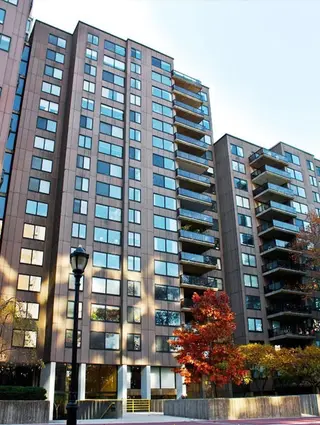
- Co-op built in 1975
- 1 apartment currently for sale ($290K)
- Located in Roosevelt Island
- 375 total apartments 375 total apartments
- 10 recent sales ($390K to $1.2M)
- Doorman
- Small Pets Allowed only

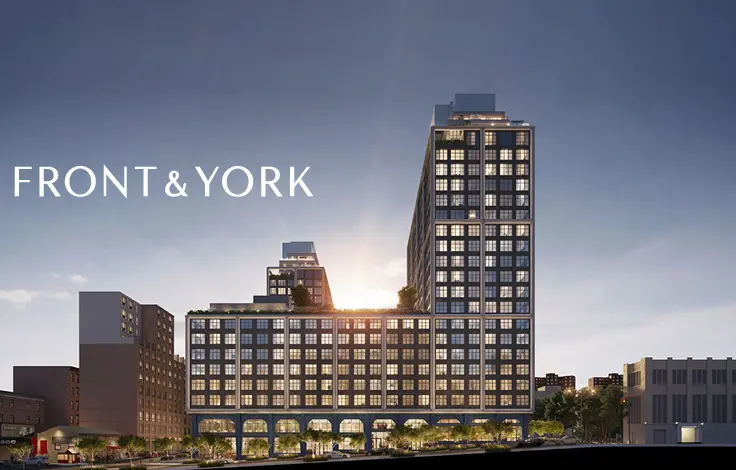
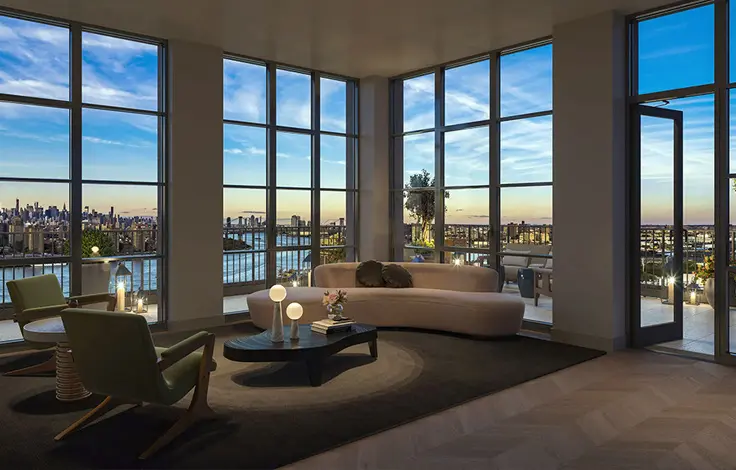

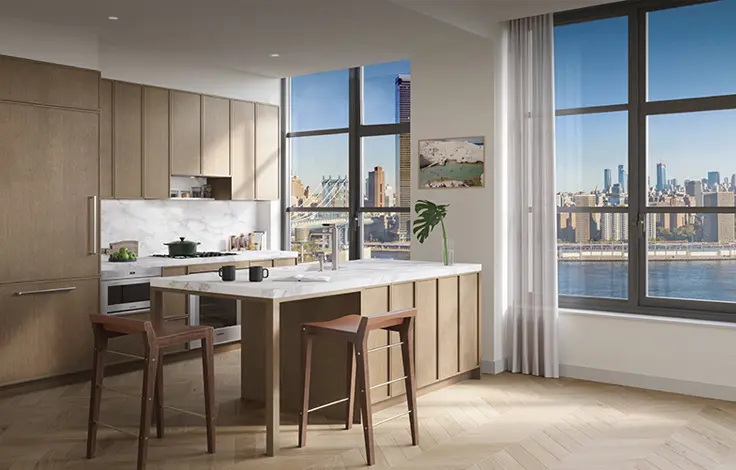
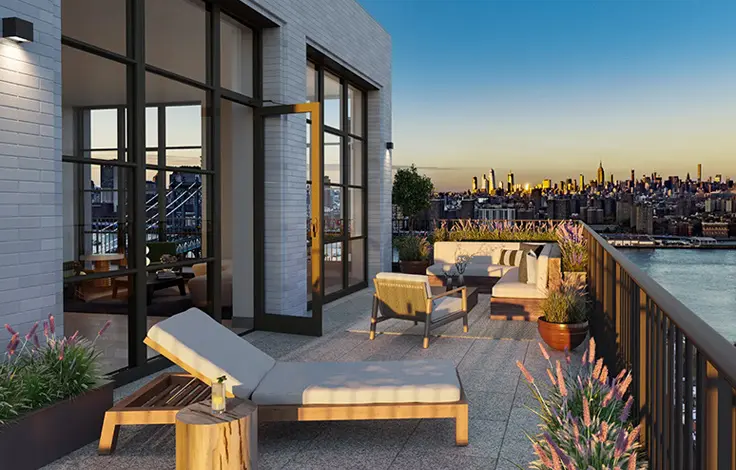
 6sqft delivers the latest on real estate, architecture, and design, straight from New York City.
6sqft delivers the latest on real estate, architecture, and design, straight from New York City.
